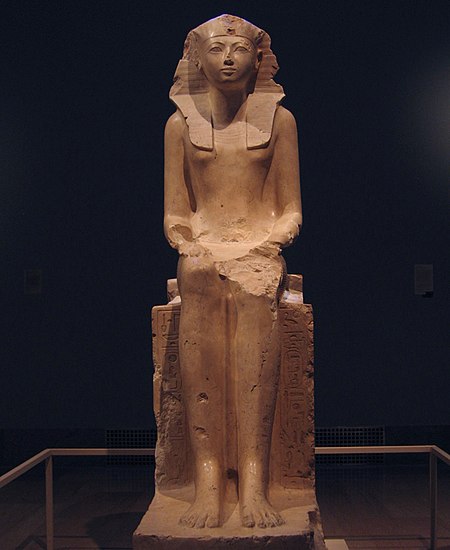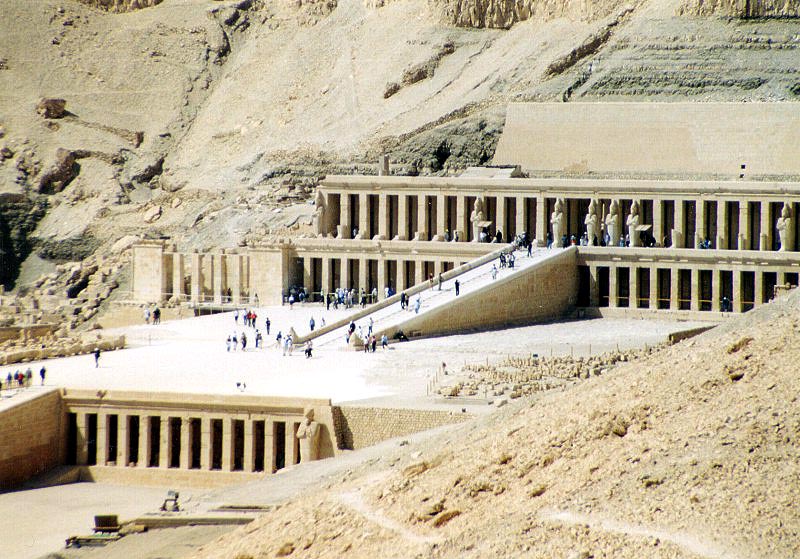 Join the Rosicrucian Egyptian Museum as we celebrate Earth Day, Astronomy Day, Spring in Guadalupe Gardens, and our Epagomenal Festival!
Join the Rosicrucian Egyptian Museum as we celebrate Earth Day, Astronomy Day, Spring in Guadalupe Gardens, and our Epagomenal Festival!
April 22- Earth Day
April 25- Spring in Guadalupe Gardens
May 2- Astronomy Day
May 18- International Museum Day
July 14-18- Egyptian Epagomenal Days
 Earth Day
Earth Day
Wednesday, April 22, 2009
Museum and Park groundsEvery year since the spring of 1970, the U.S. and other countries have celebrated
Earth Day, focusing attention on the environment and bringing awareness to our material impact worldwide. This day salutes the progress we have made towards greener living and serves as a platform to launch
new initiatives. At
Rosicrucian Park, we are continually striving to do our part in decreasing our global footprint. We compost our yard clippings, use recycled materials, prohibit the use of pesticides, take public transportation, and more. So get your green on and join us for fun-filled activities and tours here at the Rosicrucian Egyptian Museum on Earth Day!

Spring in Guadalupe Gardens
Saturday, April 25, 2009
10am-3pm
Guadalupe Gardens
Between Coleman Avenue and Taylor StreetLocated in Guadalupe Gardens, downtown San Jose, this annual festival celebrates Green Living, Earth Day and the great outdoors.
Here, you will find more information on Spring in Guadalupe Gardens in addition to a schedule of activities. The event is family-friendly and includes entertainment for all ages, food, a live band and a raffle. Expert gardening advice and booths from a variety of organizations focusing on sustainability and the environment are also advertised.
This year, guests of the Rosicrucian Egyptian Museum’s booth are invited to partake in a Papyrus Planting activity. Each participant will receive a papyrus seed, potting soil and a biodegradable pot. As the seeds are planted, guests will learn about the importance of papyrus in ancient Egypt, particularly as a source for paper. Guests will also have the opportunity to write or stencil their names in Egyptian hieroglyphs on a piece of real papyrus paper. We will also have information available regarding the many uses of papyrus and fun facts about other ancient Egyptian plant products including frankincense, myrrh and cinnamon sticks.
 Astronomy Day
Astronomy Day
Saturday, May 2, 2009
Museum and PlanetariumIn 1973, Astronomy Day was started as a means to bring together astronomy enthusiasts, professional organizations, amateur astronomers, planetariums and the general public to converse on astronomy. Each year Astronomy Day falls on a different day between May and April in anticipation of the first quarter moon.
Rosicrucian Park displays a great connection to Astronomy through our Planetarium. Every day at 2:00pm, with an additional showing at 3:30pm on the weekends, we feature “
The Mithraic Mysteries”, a cosmological origin theory of the ancient Roman mystery religion known as Mithraism.
The Rosicrucian Planetarium, opened in 1936 is the fifth planetarium built in the United States and the first in history to feature an American-built star projector. H. Spencer Lewis, the founder of
Rosicrucian Park, was an avid astronomer and his forays into science and mysticism can be seen in our Welcome Center exhibit, located in the Planetarium. In times more dangerous and uncertain than the present, ancient Egyptians would often look to the heavens for answers and explanations. Our Museum’s
Kingship Gallery holds a replica of the Dendera Zodiac, one of the most complete and intriguing examples of ancient Egyptian cosmic conceptions. Please join us on May 2nd for an Astronomy-themed day of talks, tours and presentations in our Museum and Planetarium.
 International Museum Day
International Museum Day
Monday, May 18, 2009
Museum
Since 1977, museums around the world have celebrated International Museum Day. Developed by the International Council of Museums
(ICOM), this is a day for the worldwide museum community to collectively interpret the past in light of the present to shape a better future and to bring attention to the importance of culture in our communities. The aim of this annual event is also to raise public awareness of the vital role museums play in society. Museums all over the world mark the occasion with open days, guided tours, public events and workshops. This year’s theme is
“Museums and Tourism”. Please join us on International Museum Day for a variety of talks and tours on the intricacies of life and death in ancient Egypt. Admission is complimentary!
 Epagomenal Festival
Epagomenal Festival
Saturday and Sunday July 18-19, 2009
Museum and Park grounds
The Epagomenal Festival in ancient Egypt marked the birthdays of the gods Horus, Osiris, Seth, Isis, and Nephthys. The ancient Egyptian calendar traditionally consisted of 360 days, plus an additional 5 days “out of time” when the sky goddess Nut birthed her children. All over Egypt, celebrations filled with dancing, music and general merrymaking were held to commemorate these renowned, Nile-spanning Egyptian deities. In spirit of this ancient Egyptian tradition, the Museum will put on a weekend festival in its honor. In previous years we’ve held activities on henna, cooking, perfumes and cosmetics on the park grounds,
Senet and other games in the gardens, special talks and tomb tours in the museum, planetarium activities and more. Please check back in the next few months for a full event list.





























